US tariff on Bangladesh: An urgent wake-up call for our RMG industry

The declaration by US President Donald Trump to impose a 37 percent tariff on imports of readymade garments (RMG) from Bangladesh has been the primary concern for our exporters over the past few months.
Amidst this concern, after weeks of deliberation, Trump sent a letter on July 10 this year to our Chief Adviser Muhammad Yunus, imposing a tariff of 35 percent on products imported from Bangladesh.
This rate is significantly higher than that of our close rival Vietnam in the RMG sector, as Vietnam has recently secured a trade deal with the US under which its goods will be charged a tariff of only 20 percent.
India, with an average tariff of 28 percent, is currently engaged in US-India trade talks, with its status under review. Sri Lanka faces a 30 percent tariff and is reportedly alarmed by recent increases, actively lobbying for special consideration.
Meanwhile, China continues to contend with substantial duties, with tariffs reaching up to 145 percent on selected items—a legacy of the Trump era—though some have been temporarily suspended.
Although the Bangladesh government has stated that the 35 percent tariff imposed by the US is not a final decision, as discussions are still ongoing, we believe that even in a best-case scenario, it will not be reduced below 25–30 percent.
Of course, Bangladesh will face two major challenges: US retailers and buyers will look for sources with lower tariff options, and orders will shift to new destinations. The US tariff will undoubtedly increase the retail cost of garments in the USA, which will reduce demand and ultimately decrease the volume of exports.
From recent experience, we encountered a US buyer who had shifted production to Bangladesh from China after Trump's initial tariff announcement. However, after finalising everything, he was disheartened to find that no settlement on tariffs had been reached. Before the Eid holiday, he declined to open a letter of credit. He suffered a major loss, and we missed the order.
We had another medium-sized buyer who left us solely due to production and transport lead times. They have now started new production in Uzbekistan, which welcomed them with top-tier dyeing, washing, and printing facilities, and delivered low-volume production within 40 days.
With US trade barriers rising, we must pivot towards regions offering better trade terms: the EU, UK, Canada, and Australia.
In 2020, China's export value was approximately $266 billion, while Bangladesh's was around $38 billion. The gap is clear, and so is the path forward.
We have been trying for the last 10 years and have seen some improvement in certain markets. But this will never fully compensate for the potential loss of exports to the US.
Now is not only the time to explore new markets but also to dominate niche segments within them: sustainable and premium apparel, private labels for boutique retailers, and fashion-forward seasonal drops for online platforms like Zalando, Amazon, and ASOS.
Govt-to-govt diplomacy
We must strategise our global positioning, strengthen trade relations, and promote Bangladesh as a partner not just in terms of price, but also in quality, ethics, and reliability.
To achieve this, we need to enhance government-to-government diplomacy.
Bangladesh is not new to this trade; we have many friends in the US retail industry. We should engage them. Internally, all political parties should form a consensus so that, regardless of who wins the election, they assure the US government that garments and textiles will remain a top priority and that political unrest will no longer disrupt the sector. High-level government officials must avoid making irresponsible statements.
We must emphasise premium products, such as sustainable outerwear and technical fabrics, to justify higher retail prices and offset the tariff impact.
Shift sourcing strategy
Promote private-label and boutique strategies in low-tariff markets or direct-to-consumer models through online channels.
These last two strategies are crucial for us. We know this is the era of e-commerce and digital marketing. We have educated our young generation to build their own brands. Currently, in the EU and USA, many boutique shops—both online and offline—sell high-priced products with excellent sales growth. Online platforms like Amazon, Alibaba, and Zalando already hold a large share of the retail market.
We must tap into these opportunities. Soon, such platforms will dominate the global market. To be a strong partner in this space, we must immediately consider the following:
- Change the mentality of accepting only large-volume orders. We must produce value-added products in small and medium quantities, as China does.
- Ensure that all dyeing factories operate at full capacity. We have experienced waiting more than 10 days in queue to get fabric dyed.
- Most industrial groups should establish their own sales and design offices in the USA and EU to strengthen buyer engagement.
- Companies should hire Bangladeshi professionals based abroad. Some firms hire Indians or Sri Lankans, who often leave after 1–2 years, taking their expertise with them.
Support for SMEs and micro-brands
The government should support small and medium buying houses, design studios, and sample makers through financing and visa assistance for attending trade fairs abroad.
Currently, the government deducts advance income tax of 12–15 percent from the commissions of buying houses—not their profit. A portion of this tax should be used to support that specific company—for example, by covering the cost of Amazon or Alibaba membership fees—which would immediately boost revenues.
Case studies of successful micro-brands sourcing from Bangladesh prove that it is time to think differently.
Bangladesh's garment sector stands at a defining moment. The days of depending solely on high-volume, low-margin orders are over. With rising tariffs, longer lead times, and stronger global competition, we must transform—without delay.
It's no longer about price alone; it's about speed, sustainability, value addition, and smart branding.
Our second-generation industry leaders are capable, experienced, and globally connected. What we need now is government foresight, banking reform, faster infrastructure, and strategic diplomacy.
If we act today with urgency, we will not only protect our global ranking—we will surpass it. But if we wait, tomorrow may not wait for us.
The writer is a former vice president of the Bangladesh Garment Manufacturers and Exporters Association (BGMEA).

 For all latest news, follow The Daily Star's Google News channel.
For all latest news, follow The Daily Star's Google News channel. 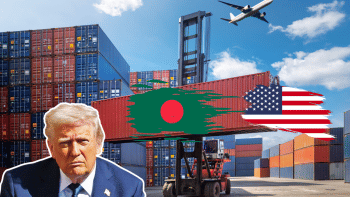



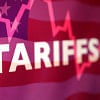
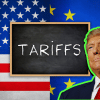
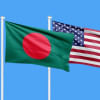
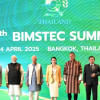


Comments